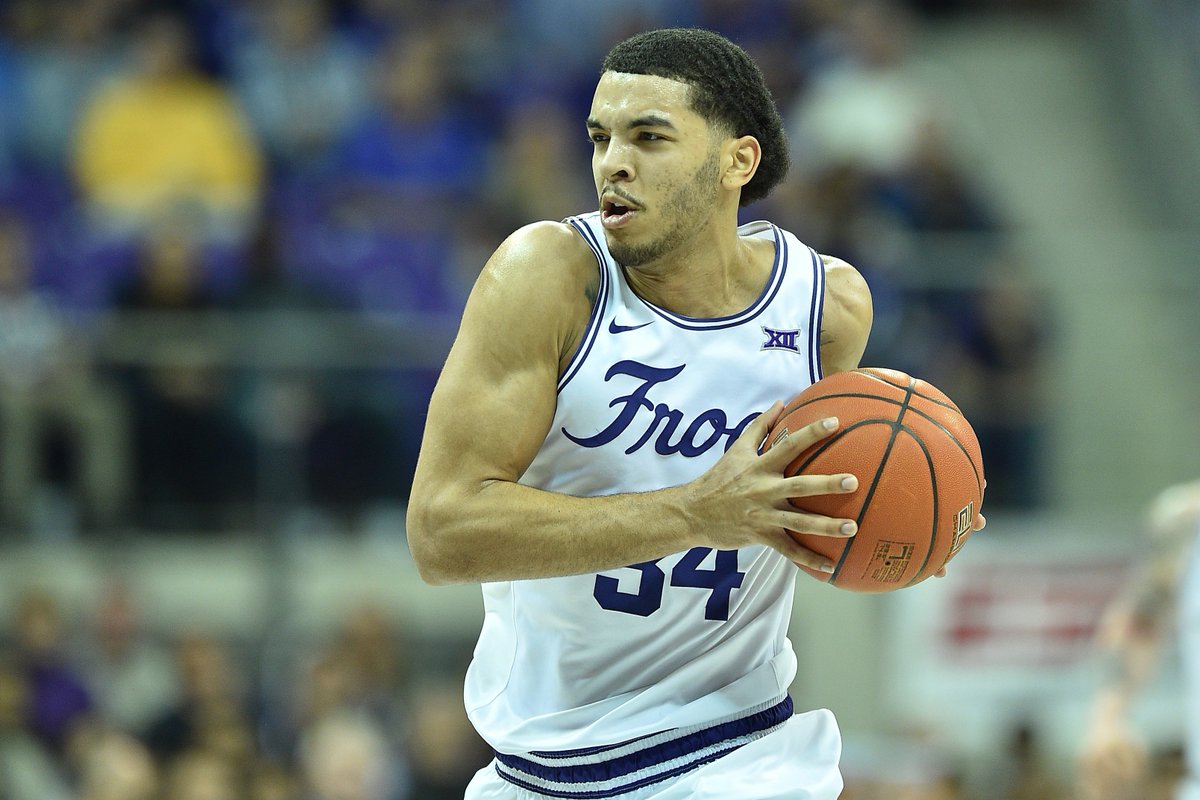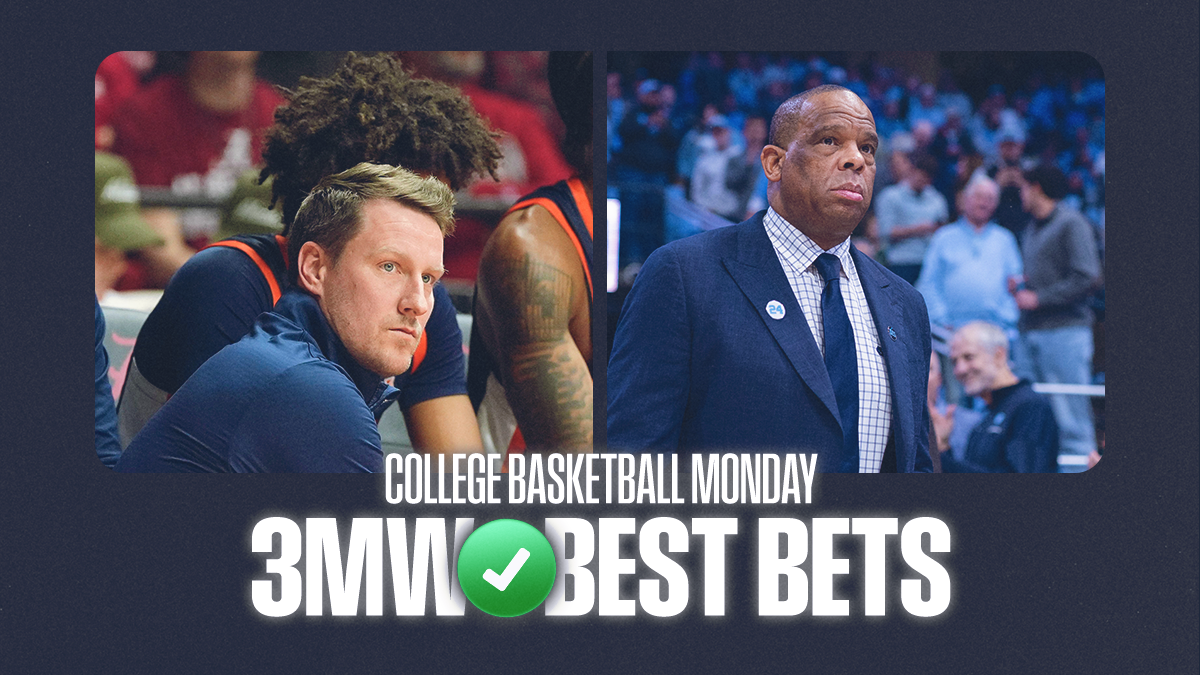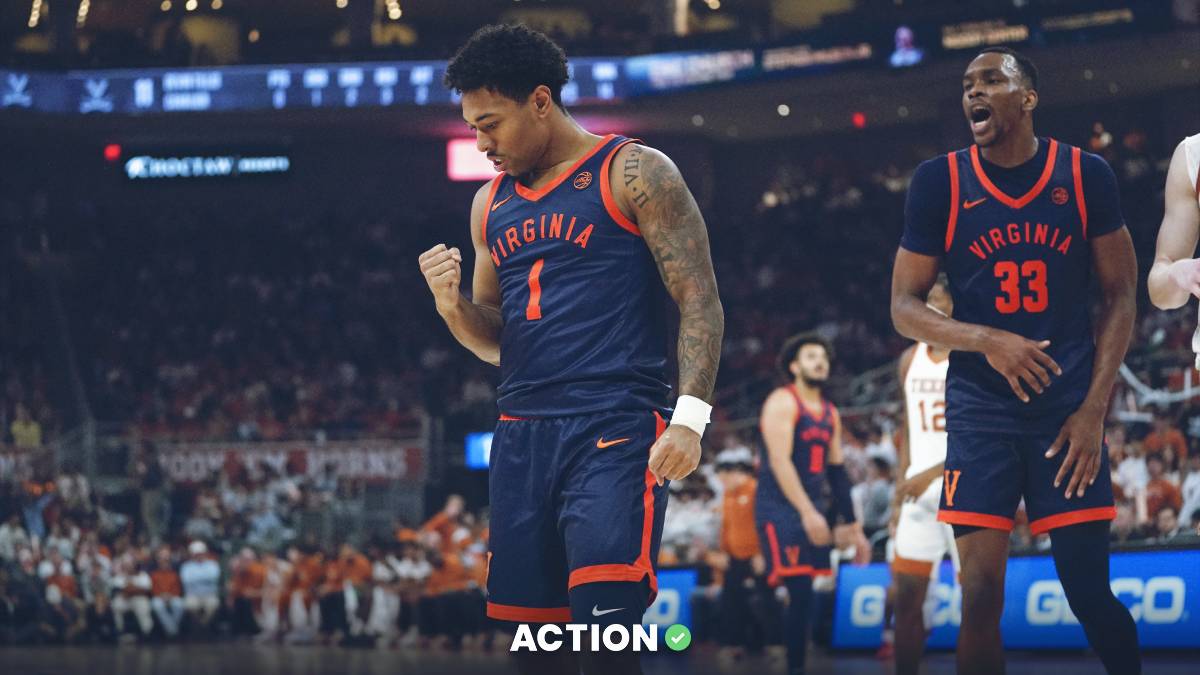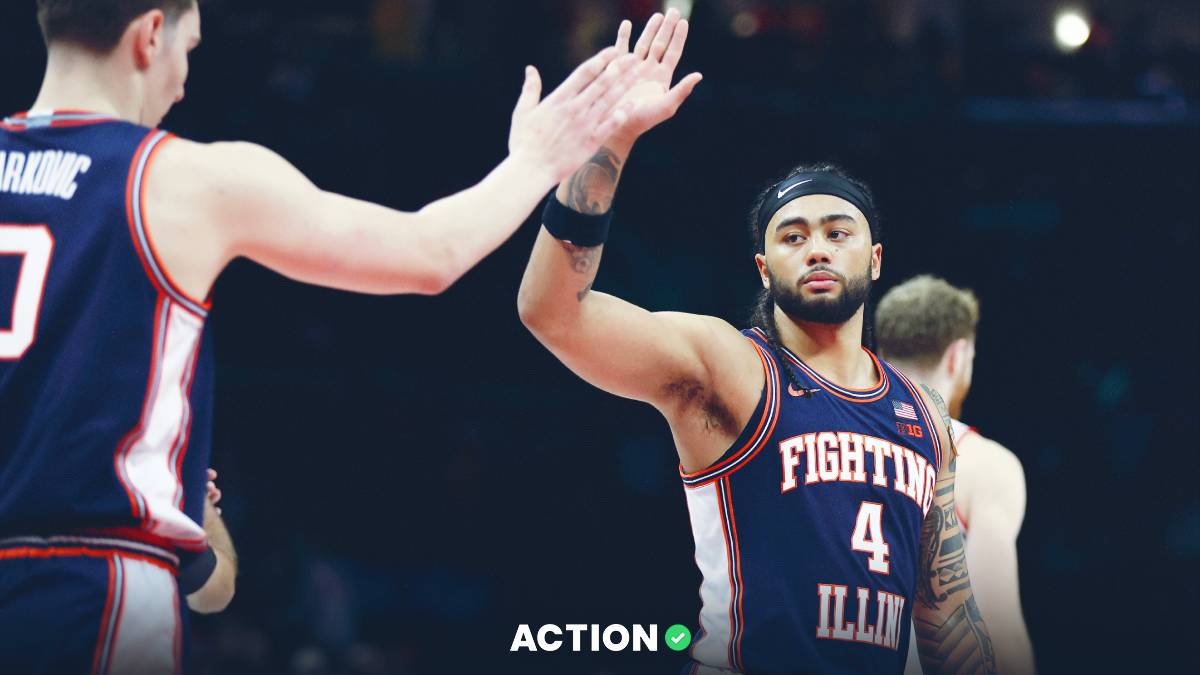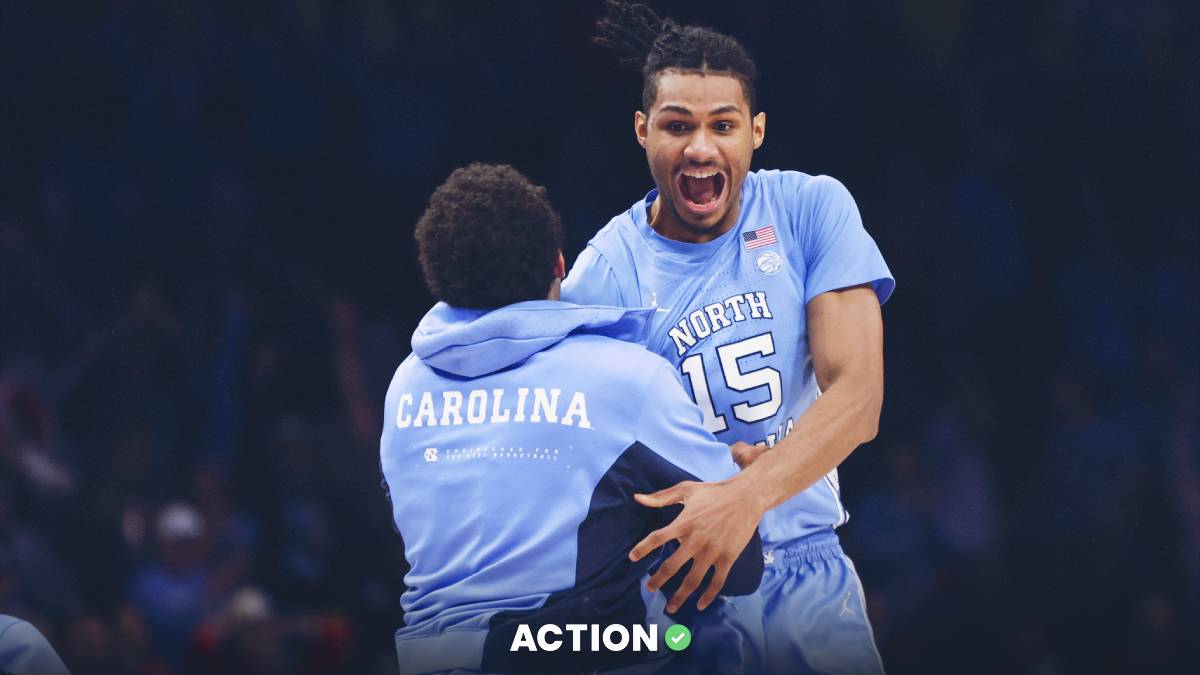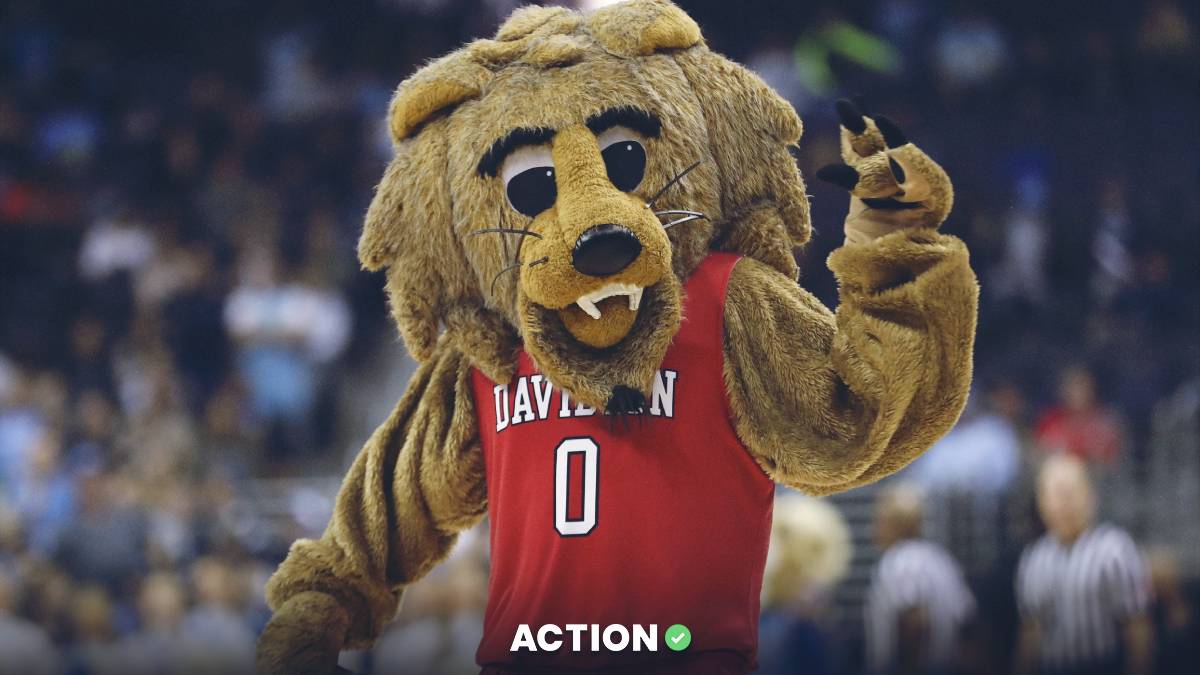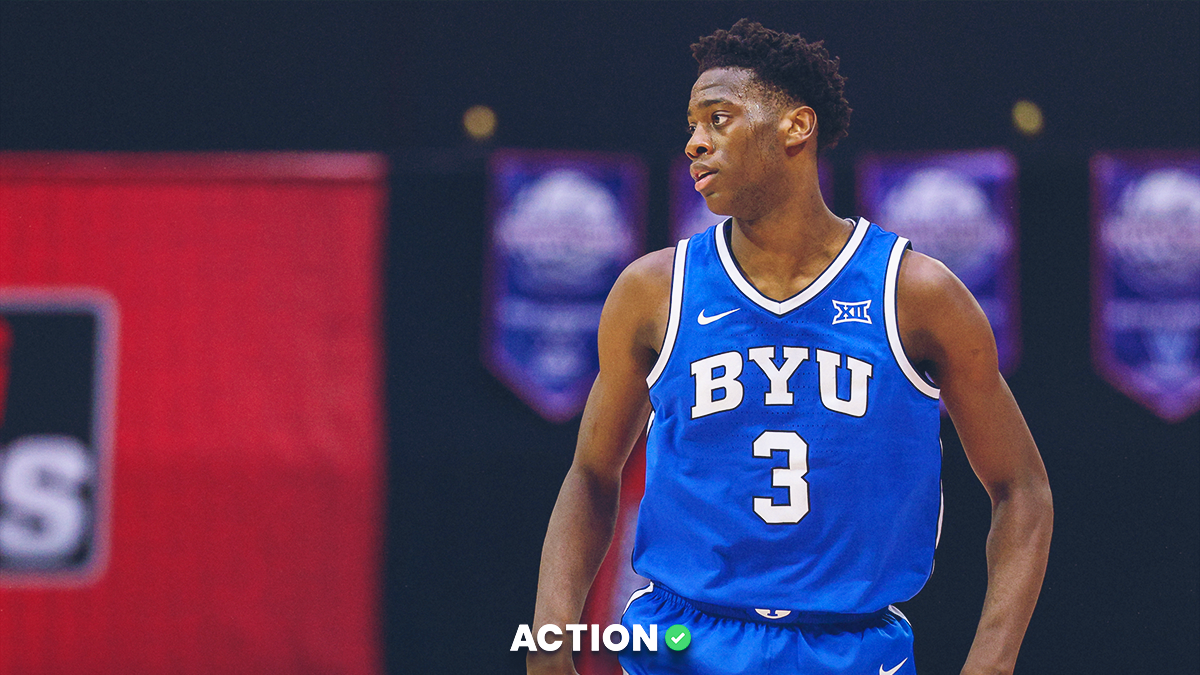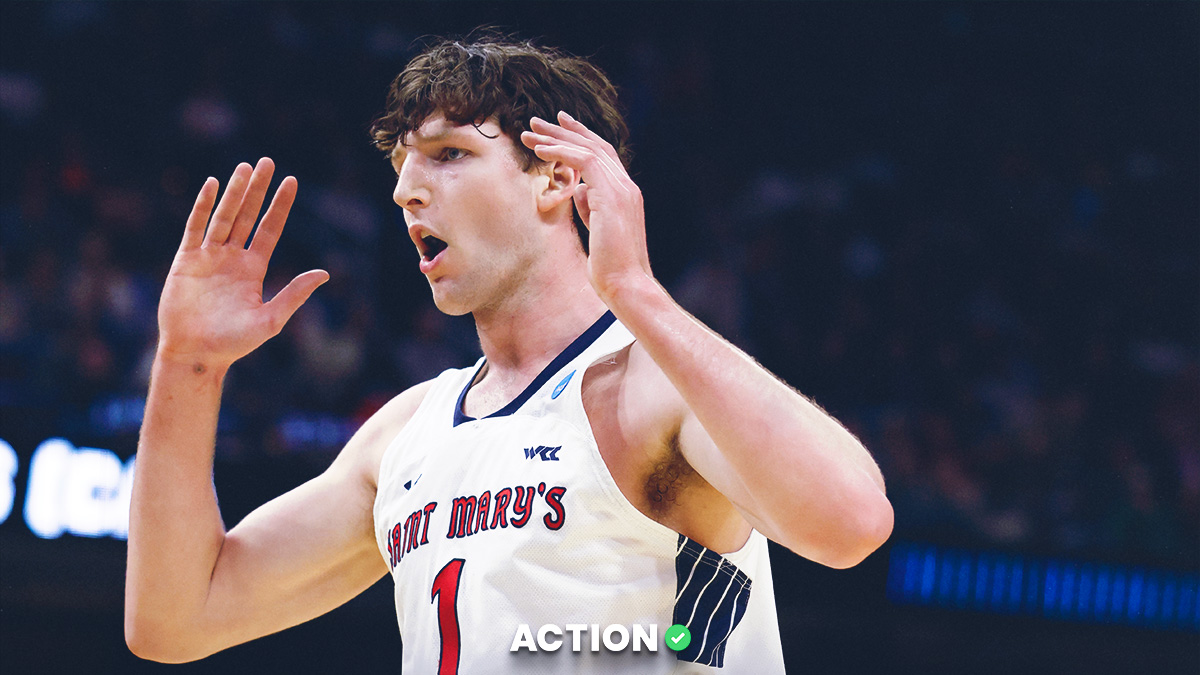1. Kansas
STRENGTHS: Backcourt. Athleticism. Talent.
After 13 straight years atop the Big 12, there's no reason to think the Jayhawks won't make it 14 this year. Frank Mason is gone, but Devonte' Graham returns and should be comfortable in the lead guard role with a major impact transfer, two key freshmen and a healthier frontcourt around him. Nevertheless, replacing the offensive production Mason (and Josh Jackson) brought to the table is going to be difficult, and the advanced metrics don't paint a rosy picture of life without them. That's of course based on an incredibly small sample size, however, since Mason never left the floor, and there's no denying that Graham has the ability to grow into the Mason alpha role as an elite shooter with distributing and penetrating ball skills. He'll be aided in the backcourt by the addition of Mississippi State transfer Malik Newman, a consensus top-10 recruit two years ago. My major concern for this backcourt is how ball handling duties will be divvied up. Neither Graham nor Newman has had to be the primary ball handler in pick-and-roll action, and both were lethal as shooters in that regard. I think Graham is the more "natural" point guard, but it will certainly be something to keep an eye on early in the year. The three spot is kind of a two-headed monster made up of Svi Mykhailiuk, a lethal spot up shooter (particularly as a baseline runner on corner 3-pointers), and Lagerald Vick, the more athletic and perhaps more defensively inclined of the two. Per HoopLens, there were nearly 700 KU possessions (still a relatively small sample size) that saw Vick on the floor with Svi off – and the numbers are eye popping on both ends. KU's offense fired at an absurd 1.28 points per possession and surrendered only 0.97 points per possession as a defense. When they were both on the floor for roughly 800 possessions, KU was significantly less efficient on both ends. In short, the advanced metrics suggest Vick is due for a monster year because of his "3 and D" projection (and he can score in a variety of ways around the Graham/Newman backcourt), while Svi's glaring defensive issues relegate him to spot shooting duties. Last year's frontcourt was very un-Selfian, but the return of a healthy Udoka Azubuike changes the outlook for this season. Azubuike is built like Thing from "The Fantastic Four," and he projected as a monster rebounder and rim protector in his injury-shortened freshman season. He also projected as a monster fouler, which is a major concern given the lack of depth behind him in the paint. That depth will be provided by Billy Preston (no, the "Fifth Beatle" isn't making an attempt at major college basketball, that would be a major story, especially since he died a decade ago), a five-star freshman power forward. Preston's athleticism is off the charts and can be useful in pick-and-pop situation. Mitch Lightfoot didn't show his four-star recruiting pedigree last year as a freshman, but perhaps a year of adjustment will allow him to be more serviceable in the frontcourt. Wing depth is actually pretty solid, as four-star frosh Marcus Garrett can play 1-3 and should make an impact defensively. Self will get some stretch-shooting reinforcement with Arizona State transfer Sam Cunliffe's pending eligibility after the first semester.
WEAKNESSES: Defense. Frontcourt depth. "Point guard" duties.
I mentioned the potential issues with the frontcourt depth and ball handling assignments above, but my biggest concern is the likely defensive issue at nearly every position. Mason was the team's best on-ball defender, Jackson was key because of his athleticism and the ability to switch on every ball screen and defend inside or out, and Landen Lucas was a bulldog in the paint. Vick, Garrett and eventually Cunliffe have the tools to defend like Jackson, while Azubuike certainly has the ability to be a rock in rim protection if he can reduce the foul rate, but it's definitely the biggest concern on a team that has national championship contender status once again.
SCHEME: Bill Self made a major schematic adjustment last year and embraced the "pace and space" revolution! While it was a still a staple of the offense, the ubiquitous Bill Self "high low" action centered around two bigs at the 4 and 5. Thanks to Josh Jackson, Self rolled with a more "positionless" four-out lineup, and the results were immediately gratifying. KU's 3-point attempt rate was the highest of the Self era, and they hit at an absurd 40 percent as a team, giving Self his most efficient offensive team in his 14 years in Lawrence. With those results, I would have to think Self continues to distance himself from the high-low sets, even with Jackson in the NBA now. That does, however, present some defensive issues, mostly centered around Svi.
OUTLOOK: A 14th Big 12 regular season title is expected, if not a given, and Bill Self's eighth No. 1 seed in March is also likely. Whether this team gets over the Final Four schneid is probably dependent on the defense.
2. West Virginia
STRENGTHS: Pressure defense (shocking, right?). Backcourt leadership.
West Virginia is a system driven team, and of course that system is Bob Huggins' relentless full-court pressure defense. WVU once again led the nation in turnover rate produced by the third-highest steal rate and 13th-highest block rate in the country. "Press Virginia" set up in full-court pressure in a little over half of its defensive situations, and even if it doesn't generate a turnover, it completely breaks offenses down and is a nightmare to play against if you don't have two solid ball handlers. It also creates basketball games that take longer than a Red Sox/Yankees game to play out, as there are a ton of fouls on both ends. The leader of the press and the leader of the Mountaineers in general is point guard Jevon Carter. Carter is arguably the nation's best on-ball defender, but he also contributes across the entire statistical board as a plus shooter, distributor, penetrator, rebounder and all-around efficient offensive threat. His value to WVU is incalculable. His running mate, Daxter Miles, is also a key component of the pressure defense, but his shot selection outside of the lane is suspect. Nevertheless, he's an outstanding transition threat and finisher offensively. Beetle Bolden didn't see too much time as a freshman, but he's a good shooter and will certainly find more minutes as a sophomore, especially since Huggins needs all the perimeter shooting he can get. Huggins also mined the JUCO ranks for off the ball help, bringing in Wes Harris and D'Angelo Hunter to the backcourt/wing unit. Huggins has proven in the past he has a keen eye for under the radar JUCOs, so I wouldn't be surprised to see them have an impact immediately, especially with top recruit Brandon Knapper out for the year in the backcourt. The ineligibility of Esa Ahmad is a big hit to the Mountaineers in the nonconference portion of their schedule, but he'll be back for the second semester. Ahmad's ability to defend all over the floor in the press is key, but his offensive game, while improved, was still fairly wonky, especially when he was away from the rim. Lamont West showed some promise as an athletic wing scorer with a plus jump shot, and he'll likely fill the Nathan Adrian role while Ahmad is out. West was a subpar rebounder last year, and that will have to improve in Huggins' offensive putback reliant scheme. At the 5, Sagaba Konate will have a massive impact defensively if he can stay on the floor. Thanks to his off the charts 16 percent block rate, WVU allowed just 0.88 points per possession in the 800 possessions he was on the floor last year, and the 2PT percentage defense was lowered all the way to 44 percent. He's not an offensive threat outside of putback dunks, but that's all Huggins really needs from him anyway.
WEAKNESSES: Frontcourt depth. Scoring efficiently in the halfcourt.
Behind Ahmad, West (who is hard to consider a true member of the frontcourt unless he improves his rebounding), and Konate, the only serviceable depth will be Maciej Bender. With Ahmad suspended and Konate foul prone, the first half of the season could be interesting for Huggins in terms of his frontcourt rotation. Offensively, WVU can struggle to score efficiently if they aren't grabbing their own misses, getting fouled while attacking the rim or scoring off of pressure-generated turnovers. If you have veteran ball handlers and rebound well (even teams who don't typically foul still get called for a lot of fouls against WVU, that's just the nature of the beast), you have a great chance against the Mountaineers. The inability to generate offense in the halfcourt consistently can help explain some losses like the ones at Phog and against Gonzaga in the Elite 8. They had a 99.7 percent win expectancy at KU in the second half and didn't score in the final two-plus minutes against Gonzaga, mostly because the offense shut down (the same is true of the loss in Lubbock; in fact, you can make a case that the Mountaineers realistically choked away a chance to end KU's Big 12 regular season title streak, as they had substantial second half leads in five of their six league losses).
SCHEME: Pretty straightforward here. Full-court pressure defensively and attacking the rim and the glass relentlessly offensively.
OUTLOOK: West Virginia should once again contend for the league title, but the lack of consistent offense in the halfcourt will limit their ceiling. That said, they're likely to be in the 4-6 range seed wise, and with their style, the draw is everything.
3. TCU
STRENGTHS: Experience. Ball movement. Backcourt and frontcourt balance.
Think Pitt fans are wishing they still had Jamie Dixon on the sidelines right about now? Dixon immediately turned around his alma mater and led them all the way to an NIT title. This year, the Horned Frogs should be poised to make their first NCAA Tournament since 1998. It's strange to say that a team strength is "experience" when said team graduated four seniors, but none of the four was a starter. (Dixon immediately established his own rotation that largely sent Trent Johnson's guys to reserve roles, and all five of those guys return.) Starting in the backcourt, Alex Robinson and Jaylen Fisher are dual ball handlers in Dixon's always ball scree reliant offense. Robinson was the better distributor (third-highest assist rate in the league) and penetrator, while Fisher was the better shooter and immediately established himself as one of the better on-ball defenders in the league as a freshman (and apparently his offseason meniscus injury is minor). Sophomore wing Desmond Bane provided a glimpse into the future with his play during the NIT run, and a second-year leap is expected from him. The frontcourt is equally talented, with Kenrich Williams, JD Miller and Vlad Brodziansky comprising a formidable 3/4/5. Williams (and his phenomenal haircut, which is apparently a thing in Dallas) is TCU's best player. His play in the NIT run would have me incredibly excited if I were a TCU fan. Without breaking down his stats into too much detail, Williams essentially does everything on the court at a high level, especially rebounding and finishing at the rim. He can defend 2-4, he's an excellent passer (his passing ability as a 3/4 is why TCU had the league's highest assist rate), and he could log multiple triple doubles this year. Brodziansky, meanwhile, posted the league's second-highest block rate, and he sported a shooting slash of .570/.476/.867 in Big 12 games as the primary roller in Dixon's offense. That's ridiculous for a 5 and a big reason why his ORtg in those games was an outstanding 121.6. JD Miller is a solid role player who provides some floor-stretching ability on the offensive end. Depth in the frontcourt is provided by VCU transfer Ahmed Hamdy, a block scorer, and Dixon's top recruit, the mountainous Kevin Samuel.
WEAKNESSES: Team defense.
There's really no overwhelming reason that TCU had the second-worst defensive efficiency rating in the league last year, but if there's a noticeable weakness for the Horned Frogs it's on this end. TCU allowed 3-point attempts at the league's lowest rate, but teams hit them at 39 percent when they did get them off. Given the volatility of 3-point shooting, this aspect could improve. Or it could stay the same. I don't really have a definitive answer as to why TCU was the second-worst defense in the league other than the fact they played in a league that was really good with really good 3-point shooters.
SCHEME: Dixon's offenses have always been reliant on ball screens, and he's always been one of the most underrated offensive schemers in the country. Defensively, I mentioned that Dixon appeared to place added emphasis on taking away the 3-point line in such a good shooting league, but simple bad luck negated that scheme.
OUTLOOK: I'd be shocked if TCU didn't make its first NCAA Tournament appearance since 1998, and they have a high enough ceiling out of the 7-10 seed range to make some noise as well.
4. Baylor
STRENGTHS: Point guard play. Defensive scheme. Offensive rebounding.
Has Scott Drew become the most underrated coach in the country? He catches an undeserved amount of flak, as he's built Baylor into one of the most consistent programs in the country. The Bears have been a top-six seed in March for four straight years. While I don't think this team will be on that level, they still return one of the better point guards in the league, and Drew always has length and athleticism to wreak havoc in his zone. Starting with Manu Lecomte on the ball, the Bears have a deadly shooting point, and a specialty of the Bears is the second chance kick out, where Lecomte was lethal. Baylor has been in the top four in offensive rebounding rate nationally in each of the previous four seasons, and it's a significant source of their offense, as they utilize to it attack disorganized defenses, not just simply score off putbacks. Running next to Lecomte will be Jake Lindsey, a good shooter and solid secondary ball handler for his 6-foot-5 frame. The Lecomte/Lindsey duo was fine offensively for the roughly 700 possessions they were on the floor together last year, but Baylor was significantly worse defensively when they were on the floor at the same time (per HoopLens). King McClure will return to his role as the team's best spot shooter, and Baylor fired at 1.13 points per possession with him on the floor last year. Tyson Jolly and Mark Vital will make their Baylor debuts as redshirt freshmen. Both were four-star wing recruits a year ago, with Vital bringing athleticism and the requisite length to Drew's ubiquitous 1-1-3 Bill Evans zone (although it has taken a more shape-shifting form as teams have adjusted over the years), and Jolly has a reputation as a sharpshooter.
WEAKNESSES: Frontcourt depth.
This isn't shaping up to be Drew's typical dominant frontcourt unless he gets some major statistical jumps from guys like senior T.J. Maston, and freshman Tristan Clark proves to be a stud immediately. Drew's frontcourt has been synonymous with outstanding length and athleticism, with guys like Isaiah Austin, Rico Gathers, Cory Jefferson, Taurean Prince, and last year with Johnathan Motley. While Jo Lual-Acuil does return to anchor the zone as one of the best per 40 shot blockers in the country, the pieces around him are iffy, and JLA's offense isn't exactly money in the bank either; his post game, meanwhile, is essentially non-existent. Maston will be relied upon heavily, but there's a reason he hasn't seen a bigger role in his three prior years in Waco, as both the offense and defense were a few ticks less efficient when he was on the floor. This makes the development of the freshman Clark, JUCO import Leonard Allen (who is currently on indefinite medical leave from the team) and stretch 4 Nuni Omot paramount.
SCHEME: Offensively Drew's teams have always been reliant on crashing the offensive glass and pick and roll. Defensively, the staple has always been the 1-1-3 zone that Homer Drew aped from Bill Evans' Southern Utah teams in the old Mid-Continent. The only difference is that his son, Scott, has used it with length and athleticism that his dad could have only dreamed of.
OUTLOOK: The loss of skilled athleticism in the frontcourt likely means this team takes a step back, but they should still qualify for the tournament in the 7-10 seed range.
5. Oklahoma
STRENGTHS: Talent influx. Minutes continuity. Defense.
Last year the bottom fell out for the Sooners, as they had to adjust to life without Buddy Hield and Isaiah Cousins. Excluding his first season in Norman, it was by far the worst Sooner team of the Lon Kruger era, particularly offensively, where his teams usually thrive. Obviously a hobbled Jordan Woodard didn't help things, but this year's OU team should bounce back, especially with the addition of five-star freshman point guard Trae Young. Young comes to Norman as a local (OKC) recruit with a reputation for having "in the gym" range and a great handle. Kruger is one of the outstanding transition basketball coaches in college basketball, and Young could have a one-and-done season as the centerpiece of this offense. That said, sophomore wing Kameron McGusty will get his, too. McGusty has the talent to have a breakout year, especially with an improved point guard situation, but he's a bit of a black hole offensively. Per HoopLens, OU scored at 0.97 points per possession when he was on the floor and 1.05 when he was off. Of course he was in his first year of D1 ball in the nation's best conference to boot, so I'm willing to extend the benefit of the doubt in his development. Also returning to the backcourt is Rashard Odomes at the 3, one of the weirdest players in the country. Odomes is an athletic 6-foot-6 with a knack for scoring at the rim and drawing contact at an elite rate, but he never shoots 3-pointers. (He had nine attempts last year, hitting just one.) That's a statistical anomaly for any modern day wing, but it's amplified by the fact that he plays for a coach who has generally always embraced "pace and space" before it was the soup du jour. Regardless, he's an important piece on both ends for Kruger this year. The first half ineligibility of Kristian Doolittle is a blow. Per HoopLens (again), OU was significantly more efficient offensively and defensively with Doolittle on the court at the 4. He's a solid rebounder on both ends and can step out on the perimeter, and he was an effective defender in pick-and-roll. Freshman Brady Manek should hold down the fort at the 4 more than competently in Doolittle's absence, and he holds value as more of a floor stretcher than Doolittle. When (if?) Doolittle returns, Kruger will have built in depth at the position. Khadeem Lattin will slot in at the 5 as one of the nation's elite shot blockers. Lattin led the Big 12 in block rate, but his only discernible skill offensively comes via putback, as he has yet to develop an efficient post game in his three seasons in Norman. That can be overlooked given the immense value Lattin holds defensively, and he's the linchpin of a unit that was surprisingly one of the best in the league given the deficiencies the Sooners had everywhere else on the floor.
WEAKNESSES: Offensive efficiency.
My biggest concern for what should be a very talented OU team is whether or not everything actually comes to fruition on the offensive end. Young is an elite talent, but he's also incredibly slight of frame. Will he get pushed around by bigger D1 guards? We also saw enough possessions from McGusty and Odomes to pretty much know what they are, and we can pretty much safely assume Lattin's offensive game is what it is. That's not to say that there isn't room for improvement, but will that improvement be enough?
SCHEME: Kruger has generally always run an efficient, up-tempo, high ball screen offensive attack that maximizes the dribbling ability (hello Trae Young) and athletic prowess of his guards. Defensively, OU has been one of the better lane clogging defenses in the country the past three or four years.
OUTLOOK: The sheer talent of Young gives OU a high ceiling, and I think they fall somewhere in the 7-10 seed range, but they could be a big mover if the freshmen Young and Manek develop quickly.
6. Texas Tech
STRENGTHS: Experience. Depth. Improved health and hopefully luck. Frontcourt.
Chris Beard is one of the best young coaches in college basketball, and he should have the Red Raiders back in the NCAA Tournament this year. Beard's roster this year is one of the oddest constructed rosters in the country, as he has five senior starters and then a bunch of JUCOs and freshmen. (Beard is a wizard at mining the JUCO ranks for talent, just ask Purdue.) The offense will flow through Keenan Evans, one of the most criminally underrated offensive players in college basketball. Evans posted a 117.4 ORtg last year, hitting 43 percent from 3 and drawing contact at the league's fourth-highest rate. (He proceeded to hit 85 percent of his free throws.) And he did this all while playing out of position at the point! If Beard can get two highly-rated JUCO prospects in Josh Webster and Hyron Edwards to be consistent on-ball threats, it would allow Evans to slide off the ball more often and potentially have a monster senior season. Edwards posted major scoring numbers, and Webster has great size for his position. Niem Stevenson was another typical Beard JUCO success story off the ball last year. He wasn't flashy, but TTU scored at 1.13 points per possession when he was on the floor, per HoopLens. His +.08 ppp differential was the highest on the team. Brandone Francis-Ramirez, a former four-star transfer from Florida, will see minutes at the 2/3, as will Beard's top freshman recruit, Jarrett Culver. Davide Moretti is a potential option on the ball for Beard as a freshman as well, and he rounds out a deep backcourt for the Red Raiders. At the 3, senior Justin Gray will likely be the starter, but I'm sure Beard would like to see his burgeoning perimeter game from two years ago return. As it is, he's an athletic slasher and one of the team's better perimeter defenders with his length. Beard's frontcourt is a strength with Norense Odiase healthy and Zach Smith returning. Odiase was one of the league's best rebounders and rim protectors as a freshman, but injuries have derailed that promising start. He'll be a defensive force if healthy. Smith, meanwhile, is an athletic freak who can guard 2-5, and he's good for several highlight dunks a year. Smith can do everything on the floor from the 4 position, and he's an invaluable defender in Beard's pack line defense. DePaul transfer Tommy Hamilton and freshman Malik Ondigo provide more than serviceable depth in the frontcourt.
WEAKNESSES: Perimeter shooting.
Beard's team struggled from 3 last year, and with stretch 4 Anthony Livingston gone, I don't see any way that it improves unless there are some hidden gems in the JUCO class (which knowing Beard, there very well could be). Having a guy like Gray at the 3 really hamstrings your offense in terms of increasing your 3-point capacity.
SCHEME: Beard runs a pack line defense, which should be even better this year with Odiase healthy. Offensively, it's mostly old school Bob Knight motion.
OUTLOOK: TTU suffered some seriously bad luck in close games last year. Combine that with a terrible nonconference schedule, and the Red Raiders barely missed out on the NCAA Tournament. This year should be different, and while they may flirt with the bubble at times because of another lackluster OOC slate, they should slot in at 9-11 come March.
7. Texas
STRENGTHS: Defense. MO BAMBA.
Texas is the most volatile team in the league for me this year. The offense was so putrid last year that it's tough to trust them to make any significant gains, but Mo Bamba looks like everything he's been hyped to be, and more. First things first, though, Shaka Smart had to address the point guard situation from a year ago. Kerwin Roach and Andrew Jones were playing out of position on the ball, and that was evident to anyone who watched a second of Texas basketball last year. Thus the offense scored at just 0.96 points per possession in league play, turning the ball over at a high rate and barely hitting 30 percent of their 3-pointer. Every offensive possession essentially broke down into isolation for Jones, Roach or Jarrett Allen. Roach had a truly miserable season on the ball, while Jones at least showed some promise as a shooter. The hope in Austin is that four-star freshman PG Matt Coleman can slide in on the ball immediately and move Jones and Roach to a more conducive slasher role off the ball. With those three starting at the 1-3 positions, former highly-touted recruits Eric Davis Jr. and Jacob Young will have to provide spot shooting off the bench, a role freshman Jase Febres can fill as well, especially considering Young and Davis combined to shoot a horrific 63 3-pointers on 257 attempts. That's a 24.5 percent clip. Yuck. The frontcourt will be manned by Tulane transfer Dylan Osetkowski and uber prospect Bamba. Osetkowski was an underrated pick-and-pop big at Tulane and a fundamentally solid post defender. He doesn't have a hyped pedigree, but he's an overlooked addition by Smart. Bamba, of course is the big news in Austin this year, and outside of a high foul rate, he looked dominant in the Horns' Australia trip. Bamba's wingspan and athleticism combo is absurd and potentially unfair, even at the high D1 level. He just has to reduce the fouls to have a massive impact this year. He'll totally displace James Banks out of the 5 role, reducing the former four-star recruit to depth behind Bamba when he's inevitably in foul trouble; judging by the Aussie trip, four-star incoming frosh big Jericho Sims is likely going to be ahead of Banks in the frontcourt pecking order as well.
WEAKNESSES: Perimeter shooting[ Unproven point guard play.
I mentioned both of these areas when discussing the backcourt, but it can't be said enough: The perimeter shooting and point guard play from the Horns was astonishingly bad last year and completely undermined what was a typically very good Shaka Smart defense. Jones should have a better sophomore year if he can slide off the ball, and he's a certain NBA talent. Roach can also focus more on slashing to the rim in pick-and-roll instead of handling the ball in that scenario. Young and Davis simply need to shoot the ball better.
SCHEME: Smart runs a ball screen heavy offense that usually exploits his teams' athleticism on the perimeter. Again, Roach and Jones should thrive in that role if they don't have to be the primary ball handler as well. Defensively, perhaps only Tony Bennett at Virginia is as synonymous with a style of defense than Smart, and that style is of course "havoc" from his VCU days. In reality, Smart hasn't really pressed all that much since arriving in Austin, and with Bamba coming in as an elite shot blocker, I would expect more of the same.
OUTLOOK: As I mentioned at the offset, Texas is hard to pin down with a ranking. Only Kansas has a higher aggregated talent ranking, and that's just by a small fraction. If the Horns can hit some perimeter shots, the ceiling is very high, but I'll slot them in as a 10 or 11 seed right now.
8. Iowa State
STRENGTHS: Incoming talent. Athleticism in the frontcourt.
Iowa State lost as much offensive production as any team in the country, but total despair should be avoided, and a seventh consecutive tournament invite is even possible given the way Steve Prohm reloaded with talented freshmen and transfers. First and foremost, Prohm has to find a way to replace Monte Morris at the point. But let me make clear that simply "replacing" him isn't possible. Morris was one of my favorite collegiate players of the past decade or so, but incoming five-star frosh Lindell Wigginton and veteran Donovan Jackson should be a sturdy backcourt. Both can play on or off the ball, with Wigginton profiling as an elite scorer and ball hawk defensively. He should thrive in Prohm's up-tempo, pick-and-roll based offense. Jackson will be the new leader of the Clones, and he's an elite perimeter defender with a high chance of a breakout season offensively. He posted a 121 ORtg in league play with low usage and shot rates. He profiles as a volume 3 point shooter this year with a lot of offensive upside. Nick Weiler-Babb is an intriguing 3 in a bigger role for Prohm. Prohm can run offense through him in the high post, and he's a pretty complete offensive player who could be in line for a breakout year as well with more opportunities offensively. He grades out as a plus defender with versatility as well. Sophomore Jakolby Long will also be a factor on the wing this year. Things in the frontcourt could be interesting until Princeton grad transfer Hans Brase is ready to go after back-to-back knee surgeries. Solo Young turned the frontcourt around last year when Prohm inserted him into the starting lineup about midway through the season. Young is athletic and versatile in pick-and-roll defense, so he's pretty much your typical ISU 5 man. The 4 spot will be held down by a trio of transfers in Brase, Zoran Talley from Old Dominion and Jeff Beverley from UTSA. Brase provides the most upside if he's ever able to get back to 100% percent but all three options are typical ISU bigs, as they can float around the perimeter and create facing the basket. Talley especially is an elite passer for his size. Terrence Lewis offers elite athleticism as a freshman at the 2/3, but has been battling a knee injury.
WEAKNESSES: On-court cohesion. Rebounding.
As I stated earlier, replacing Monte Morris isn't possible, and he was more than just a great PG, he was the face of the program and epitomized Clones basketball the past four years. On top of that, great Clones like Naz Long and the ridiculously athletic Deonte Burton are gone, too. ISU will be talented, no question, but November could be brutal, and even in December progress could be slow during this changing of the guard. They're also going to get slaughtered on the glass again, as they were the worst rebounding team in the league on both ends, and I don't think that changes this year.
SCHEME: Much like Fred Hoiberg, Prohm runs a transition-heavy (less so than the Mayor) spread pick-and-roll offense that creates mismatches in space with smaller but extremely athletic 4s and 5s. Defensively, Prohm will extend some pressure and utilize that same athleticism in the frontcourt to switch on nearly every ball screen.
OUTLOOK: ISU profiles as a bubble team with upside, but the working out the early kinks might cost them crucial wins in important OOC games vs. Missouri and Iowa.
9. Oklahoma State
STRENGTHS: Scheme/style/recruiting continuity during yet another coaching transition. Wing depth.
Mike Boynton takes over for Brad Underwood, but realistically there shouldn't be much change in terms of the transition-heavy, spread-motion offense that thrived in Stillwater last year, as Boynton has been with Underwood since SFA. Will OSU still run the country's most efficient offense in Boynton's first season? Heck no, as they lost Jawun Evans — but that doesn't mean the bottom will fall out for the Pokes this year (unless there's more fallout from their involvement in the Adidas recruiting scandal). Doing his best to replace Evans will be CSUN transfer Kendall Smith, who is a capable point guard who put up a fairly gaudy stat line in the Big West in Reggie Theus' transition-heavy, rim-attacking offense. If he can provide a reasonable facsimile of that production in the loaded Big 12, OSU could be a quasi bubble team. Four-star freshman Zack Dawson, an athletic combo guard, and veteran Brandon Averette will be at the ready if Smith can't get the job done at the point. Off the ball, Boynton continues in Underwood's tradition of positionless basketball, as the 2-4 positions will be manned by any number of players. Lindy Waters is a 3 and D type of wing, while Tavarius Shine is back from injury and is a better rebounder at the position and a more versatile scorer. Cam McGriff is the best rebounding option of this slew of players, while Human Highlight Reel Davon Dillard clearly offers the most athleticism (when healthy from offseason foot surgery). Jeffrey Carroll, meanwhile, is the only sure thing in this pack of wings, as he was one of the most efficient offensive players in the country last year. Of course it helped having a dynamic player like Evans running ball screens and pushing the pace in transition, but Carroll's numbers were eye popping. Per HoopLens, OSU scored at 1.19 points per possession when he was on the court, and 1.14 (still awesome, but remember, this was the country's best offense) without him. Carroll carried a ridiculous .568/.468/.842 shooting slash in league play. Mitchell Solomon returns to man the 5 as an unsung and underrated rim protector and rebounder, particularly offensively.
WEAKNESSES: The trickle down effect of replacing Juwan Evans and Brad Underwood. Defense.
Is Carroll still the efficiency monster of last year without Evans? Unlikely. Does the defense improve from allowing 1.13 points per possession in league games? Probably not significantly, but the return of Shine does help. The defense at the rim was particularly awful, as Solomon was the only capable defender.
SCHEME: I'm assuming Boynton runs the same transition-heavy, spread-motion offense that runs so fluidly with athletic depth at the 3/4, which OSU has. Defensively, Underwood's SFA teams denied absolutely everything on the perimeter and routinely produced one of the highest turnover rates in the country. Underwood found he had to play the opposite way last year after an 0-6 league start and reverted to a pack line. The defensive scheme will certainly be something to watch with Boynton. Against Arkansas-Monticello, they played typical aggressive Underwood extended pressure, but again, how much can you glean from a preseason game?
OUTLOOK: OSU is likely an NIT team in a transition year, but being a bubble team come Selection Sunday is well within the realm of possibility. I just don't know if they can score enough wins in this conference of death.
10. Kansas State
STRENGTHS: Solid backcourt.
This could be a long year for KSU, and I'm not sure Manhattanites will be happy with that two-year extension Bruce Weber got after last year's somewhat surprising trip to the First Four. Contrary to the general consensus, I think Weber is a fine basketball coach, but the whispers that he can only coach someone else's talent will continue, as his incoming recruiting class leaves a lot to be desired. Starting with the clear strength of the Wildcats, Weber has a solid backcourt in Kamaou Stokes, Barry Brown and wing Xavier Sneed, who should have a much larger role this year. Stokes was an inefficient primary ball handler last year, but he did show a knack for drawing contact off the dribble in pick-and-roll, and he was a capable jump shooter. The advanced stats per HoopLens do show that Stokes was key offensively, as KSU scored at 1.08 points per possession with him on the floor compared to an even 1.00 with him off. Brown's value lies defensively, where he posted the nation's 14th-highest steal rate, and with Sneed returning as well, KSU should continue to produce an elite turnover rate (18th-highest nationally last year). Those extra possessions are going to be key, as KSU will likely struggle to generate offense consistently this year. To wit, HoopLens states that KSU scored at just 1.02 ppp in 700 possessions with Stokes/Brown/Sneed on the floor together, but defensively they held opponents to 0.97 ppp. Redshirt freshman Cartier Diarra could be the diamond in the backcourt rough that Weber needs, as he looked like the team's best scorer in an exhibition with Missouri State. The one player who could be invaluable to Weber's offense is stretch 4 Dean Wade. Again, HoopLens paints an apocalyptic picture of the KSU offense without Wade on the floor, as the scored at a miserable 0.91 ppp in 800 possessions without him, while the efficiency jumped through the roof to 1.13 ppp when he was on the court. The defensive numbers are less dramatic, but eye popping as well, with +.06 differential when he was on the floor. Wade was clearly hyper efficient as a stretch big last year, but his usage and shot rates were far too low. That has to change this year.
WEAKNESSES: Generating offense in the halfcourt. Frontcourt play and depth. Rebounding.
I liked Mwado Sallah a lot in Jamion Christian's Mayhem defense at Mt. St. Mary's. He was a dominant rebounder and shot blocker against NEC competition. We'll see if that carries over against Big 12 competition, as he's the likely starting 5 from game one. After that, I'm really not sure how Weber's frontcourt rotation shakes out. As for the offense, I'm also not sure how even Weber realizes how valuable Wes Iwundu was in his pick-and-roll offense, and I don't see anyone on the roster capable of imitating his skill set. On the glass, Wade is a subpar rebounder, and Sallah again has to prove he can board at this level.
SCHEME: Offensively, Weber's motion offense principles have always been effective at moving his bigs away from the basket, hence the absurd efficiency of Wade. But they need to run more of that for him this year, otherwise it's a bunch of inefficient dribble handoffs and weaves with the guards penetrating off the bounce looking for contact (highest FT rate in the league last year), which likely becomes even more inefficient without Iwundu. Defensively, Weber has been really aggressive with extending his guards since coming to Manhattan, and with Brown and Sneed leading the charge in that regard, that trend should continue.
OUTLOOK: NIT bubble.
Big 12 Player of the Year: Devonte' Graham, Kansas
ALL BIG 12 FIRST TEAM:
Devonte' Graham, Kansas
Jevon Carter, West Virginia
Mo Bamba, Texas
Jeffrey Carroll, Oklahoma State
Keenan Allen, Texas Tech
ALL BIG 12 SECOND TEAM:
Kenrich Williams, TCU
Andrew Jones, Texas
Donovan Jackson, Iowa State
Manu Lecomte, Baylor
Trae Young, Oklahoma
Be part of the Action
Download the Sports Action app at the App Store or Google Play


